Jacob’s well (the Church of St. Photini)
Jacob’s well is located in the east of Nablus center about 10 minutes by taxi. It is in the crypt of the Church of St. Photini.
In Nablus, the place was called “Jacob’s Well”, including the whole site.
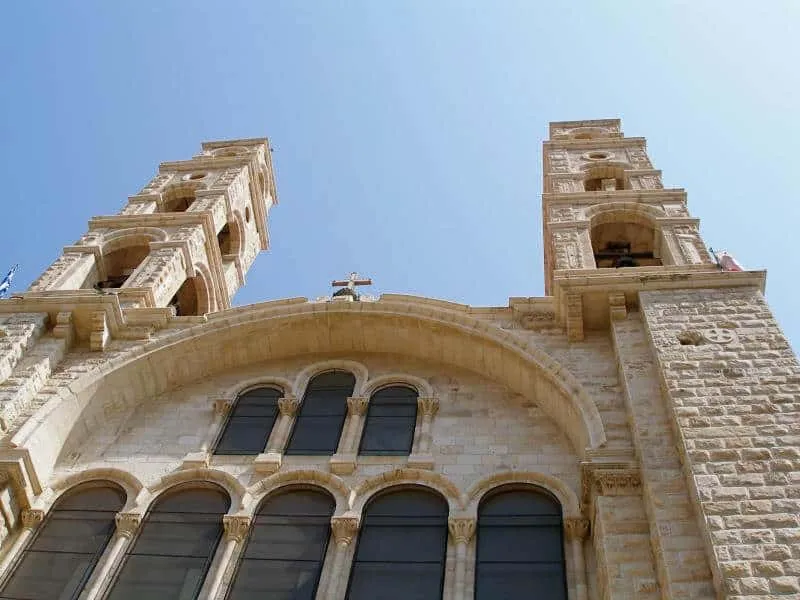
Jacob is regarded as a Patriarch of the Israelites according to the Hebrew Bible.
According to the Book of Genesis, Jacob bought the land on the way back from Paddan Aram.
After Jacob came from Paddan Aram, he arrived safely at the city of Shechem in Canaan and camped within sight of the city. 19 For a hundred pieces of silver, he bought from the sons of Hamor, the father of Shechem, the plot of ground where he pitched his tent.
Genesis 33:18-19 Biblica.com
And as stated in a Samaritan* tradition, the well is the one Jacob dug at that time.
*The Samaritans are the people racially Jewish-Assyrian mix. They were from the Israelites, but the Samaritans were despised by ordinary Jews because the Jews kept pure-blood.
Legend of Jacob’s well
Jacob’s well is mentioned in the Gospel of John. That was when Jesus was on his way to Galilee. He stopped at a Samaritan town called Sychar (Schekem, present-day Nablus).
So he came to a town in Samaria called Sychar, near the plot of ground Jacob had given to his son Joseph. Jacob’s well was there, and Jesus, tired as he was from the journey, sat down by the well. It was about noon.
John 4:5-6 Biblica.com
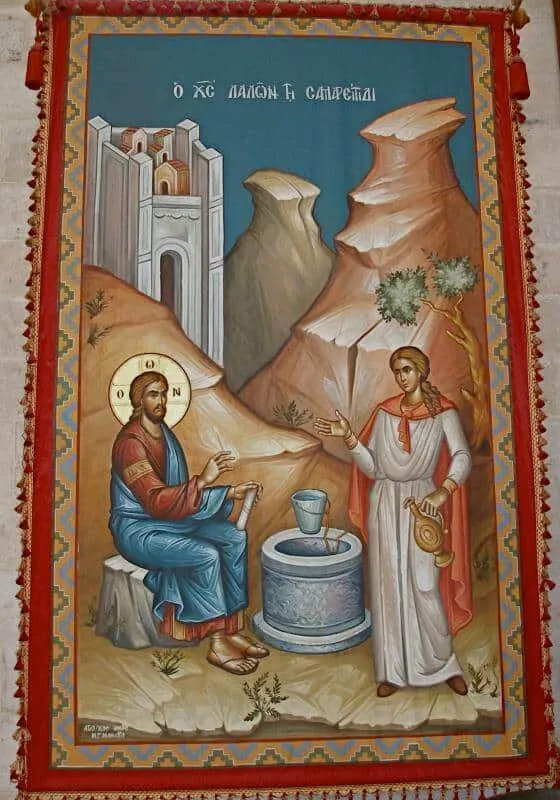
When a Samaritan woman came to draw water, Jesus said to her, “Will you give me a drink?”
The Samaritan woman said to him, “You are a Jew and I am a Samaritan woman. How can you ask me for a drink?” (For Jews do not associate with Samaritans.)
Jesus answered her, “If you knew the gift of God and who it is that asks you for a drink, you would have asked him and he would have given you living water.” … Jesus answered, “Everyone who drinks this water will be thirsty again, but whoever drinks the water I give them will never thirst. Indeed, the water I give them will become in them a spring of water welling up to eternal life.”
John 4:7-14 Biblica.com
The woman realized He was a prophet and posed a question.
“Sir,” the woman said, “I can see that you are a prophet. Our ancestors worshiped on this mountain, but you Jews claim that the place where we must worship is in Jerusalem.”
John 4:19-20 Biblica.com
At that period, the Jews and the Samaritans didn’t like each other, which caused a problem.
The Samaritans who were kicked out from Jerusalem considered Mount Gerizim as the Temple. But the woman might have had a doubt about it.
Jesus said to her, “Woman, believe me, wthe hour is coming when xneither on this mountain nor in Jerusalem will you worship the Father. You worship what you do not know; zwe worship what we know, for zsalvation is afrom the Jews. But bthe hour is coming, and is now here, when the true worshipers will worship the Father cin spirit and dtruth, for the Father eis seeking such people to worship him. God is spirit, and those who worship him must worship in spirit and truth.”
John 4:21-24 Biblica.com
He answered her what is important for worship is the spirit.
History of Jacob’s well
4th century
The well was identified, and a church was built with generous protection by the Roman emperor.
1187
The church was destroyed by Saladin, the first sultan of Egypt and Syria, but the well survived.
19th century
No church had been built for centuries, but Christians kept venerating the place.
In 1860, Greek Orthodox Church got the site. Then a new church named after the Samaritan woman was built in 1893.
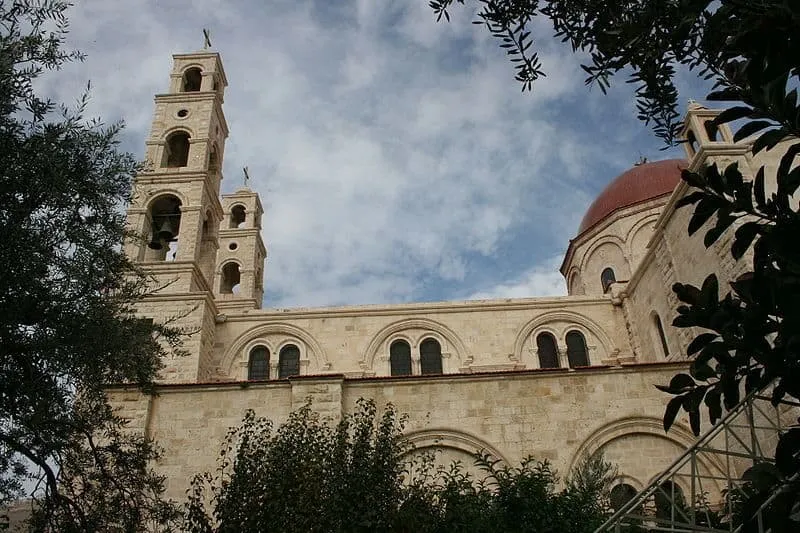
After WWII
Israel occupied Palestine.
At the beginning of the 1980s, Jewish settlers started to claim biblical ownership of the well. They killed a monk and tried to occupy it, but they failed.
Inside the church
The inside is decorated with marble, which makes the church so sublime.
You can reach Jacob’s well from the stairs in front of the altar.
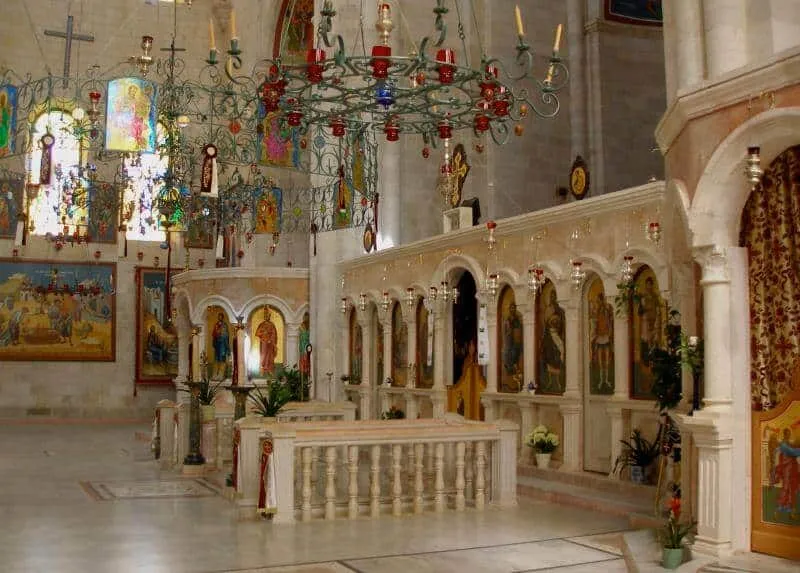
The well still works; the water is drinkable. However, the well can dry in summer, recent days.
The depth recorded in 1935 was 41 meters (135 ft), but it seems more shallow now.
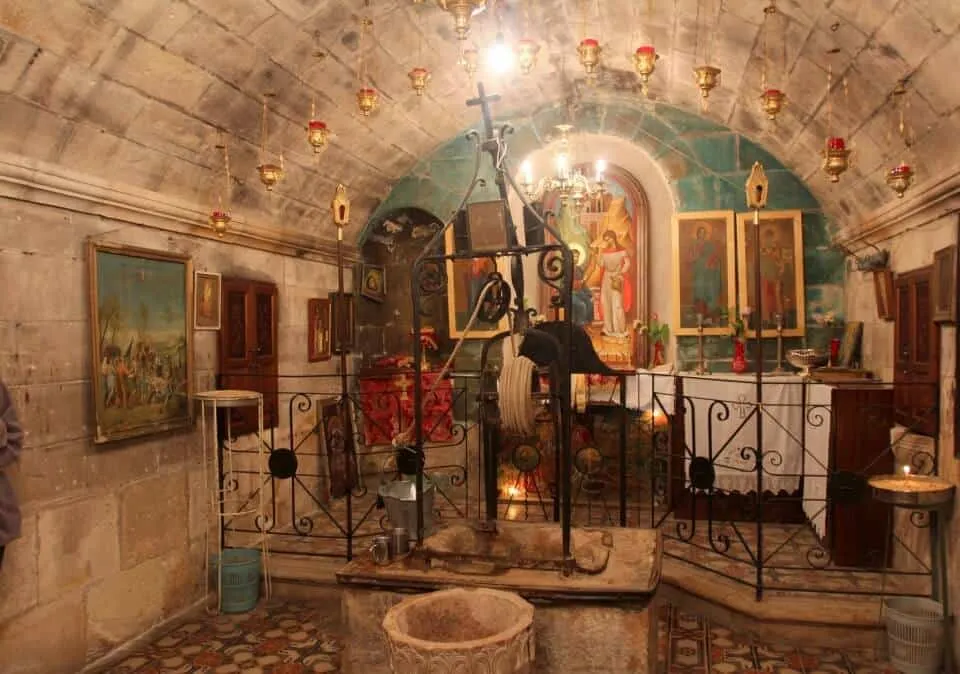
Information
Jacob’s well / the Church of St. Photini
- Faisal St.
- 8:00-12:00, 14:00-16:00
- Admission is free, but donations or buying a postcard would be appreciated.
- 10 minutes from the city center by taxi, about 15 NIS